The Hermitage Kusanats of Avetaranots
Location
The Kusanats hermitaget is located on the south-eastern side of Avetaranots (Chanakhchi) village in the Askeran region of Artsakh Republic, on a steep promontory. Avetaranots village is one of the oldest and most famous villages in Artsakh, it was the seat of meliks. In memoirs and historical colophons it is mostly cited from the 17th-18th centuries and it is mentioned as a village or town. There are numerous historical and cultural monuments in the settlement (fig. 1). Today the village is under the control of the Azerbaijani armed forces. It is about 1200 m above sea level, surrounded by Kirs, Ghevondik and Mavas mountains.
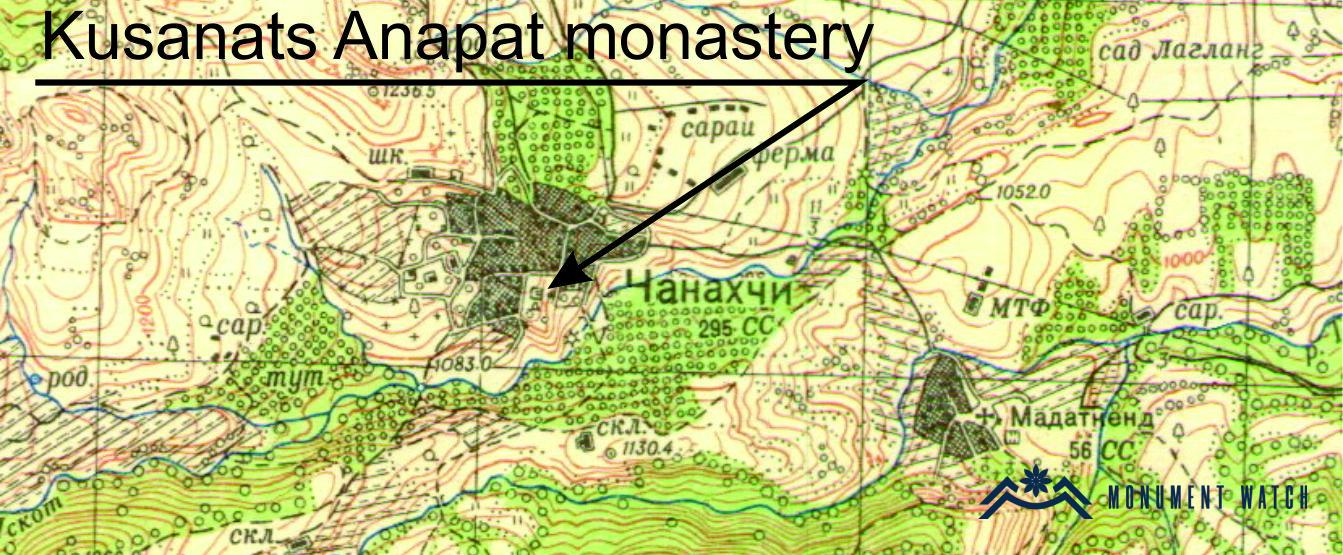
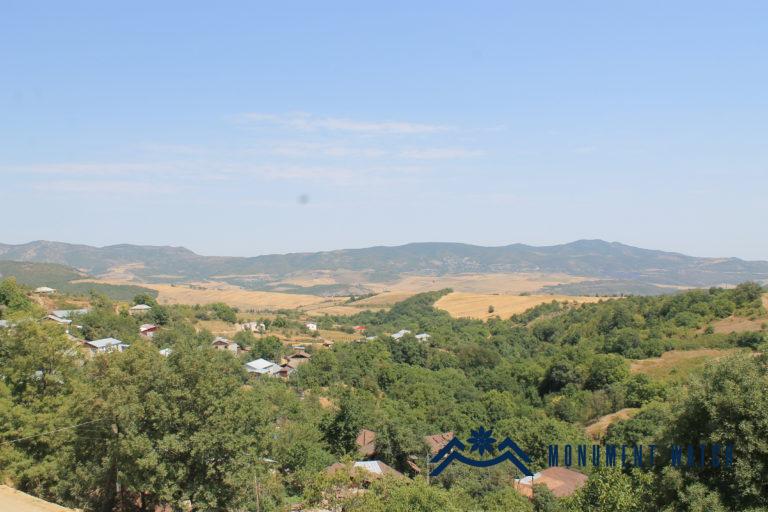
Նկ. 1 Ավետարանոց գյուղի ընդհանուր տեսքը՝ դիտված Կուսանաց անապատի կողմից։
Historical Overview
In his book, Bishop Sarkis Jalalyants mentions a colophon according to which the church of the Kusanats hermitage was built by the virgins Gayane and Hripsime with the support of Father Arakel (Jalaliants 1858, 243). The date of its construction has been preserved on the pediment of the entrance door of the church. The inscription dates back to 1616 “...the church in 1616 (CAI 5, 148). In the early period of the Varanda meliks, a narthex-crypt was added to the church. Here is also the Melik Shahnazarian family crypt, and the hermitage is also known as Gayane Monastery.
Architectural-Compositional Examination
Today, the church, the Shahnazarians' narthex-crypt, and the wall on the western side of the monument are preserved from the Kusanats hermitage (fig. 3). The church has the composition of a three-nave basilica, where the side naves are rather narrow, while the central one, crowned by an apse, is wide. The floor is nearly square (it measures 9.0 x 11.0 m). The prayer hall is illuminated by a door and two windows opening in the western wall (fig. 4), through two small windows on the south side and the one that opens into the apse. The hall is vaulted, with consolidating arches resting on columns with cross-shaped bases. Two of them “stand” freely inside the prayer hall, and the other two, in addition to serving as a support for the arch, have become corner sections of the semicircle of the apse. The church has a pair of sacristies, which crown the end of the side naves. There are niches-windows in the walls of both the apse and the sacristies. On the southern facade of the church there are three tombstones of the 15th-16th centuries, with cross compositions and carvings (fig. 5). Khachkars and tombstones are used in other walls also. The use of these early monuments in the Kusanats hermitage buildings also indicates the existence of a former religious center there. Inside the church, crosses are carved on the arches and columns (fig. 6).
Attached to the west side of the church is a narthex, which has a square floor, like the classical narthexes (6.4 x 6.4 m), but is smaller. The narthex is vaulted. In addition to being a narthex, it is also the family crypt of the Melik Shahnazarians. Here are the tombs and tombstones of Archimandrite Vardapet, Melik Mirza, Melik Hussein, Melik Hovsep and their wives (fig. 7).
Melik Hussein and his daughter Gayane are mentioned in history for their courage and patriotism. The inscription on his tombstone tells the story of Melik Hussein:
“This is the tomb of Melik Shahnazar
Son of Melik Hussein, Date (1736).
These are my words of praise
On Melik Hussein,
Which I write on this tomb.
He was the Lord of the land of Varanda,
And of its 35 villages,
With his table full of bread,
He has mercy on every nation․
His appearance was praiseworthy,
He greatly massacred the nation of Turks,
He fought with the Ottomans,
He gave no tax to the king,
He was a strong wall to the world.
It was in 1709 (Collection of Armenian Inscriptions, 149).
Literary Examination
The issues of location, architecture and dating of the Kusanats hermitage were touched upon by Sh. Mkrtchian (Mkrtchian 1985, 178-180). A brief description of the hermitage can also be found in the Russian edition of the author’s book.
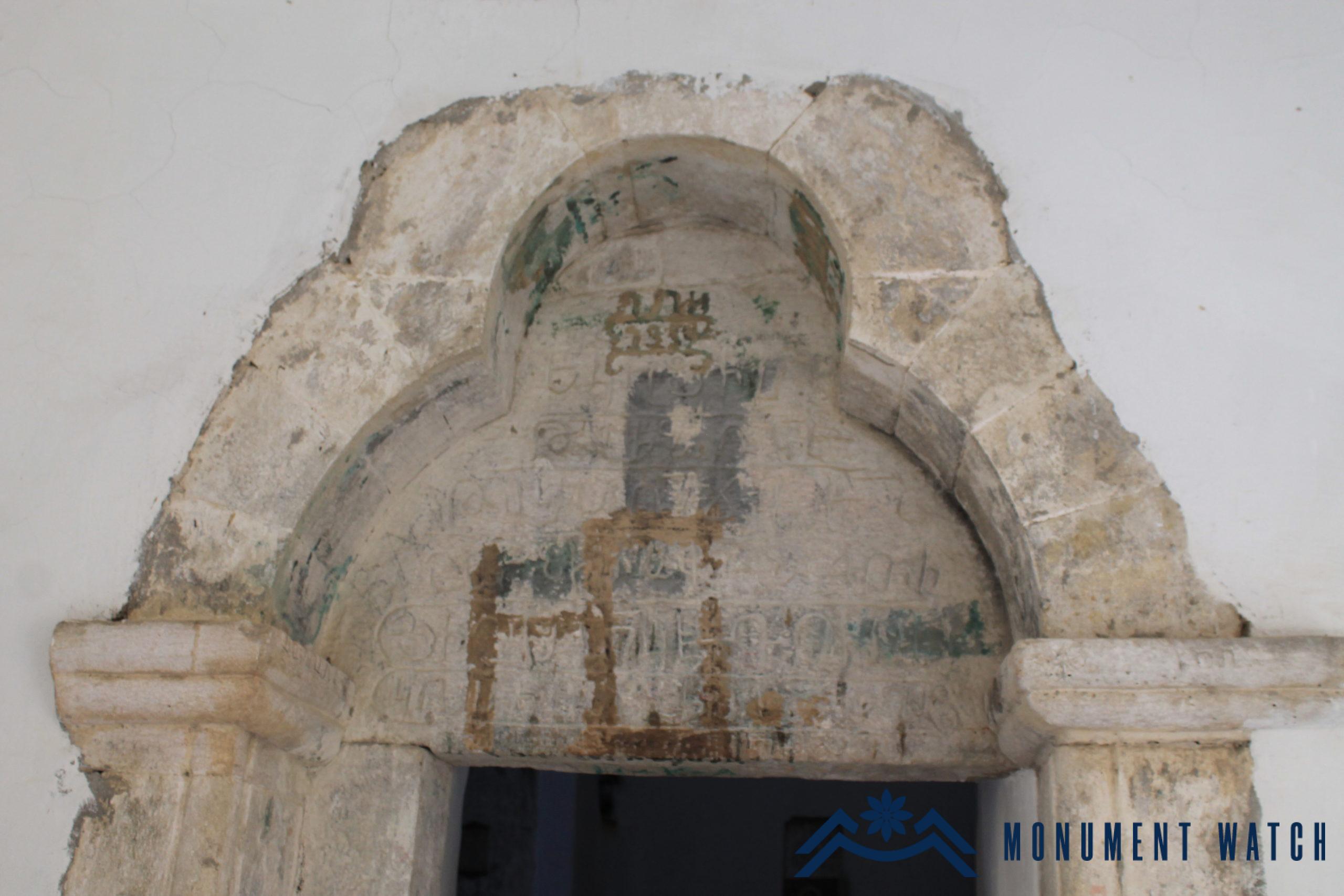
Նկ. 2 Եկեղեցու արևմտյան բարավորի արձանագրությունը, լուս․ Լ․ Կիրակոսյանի:
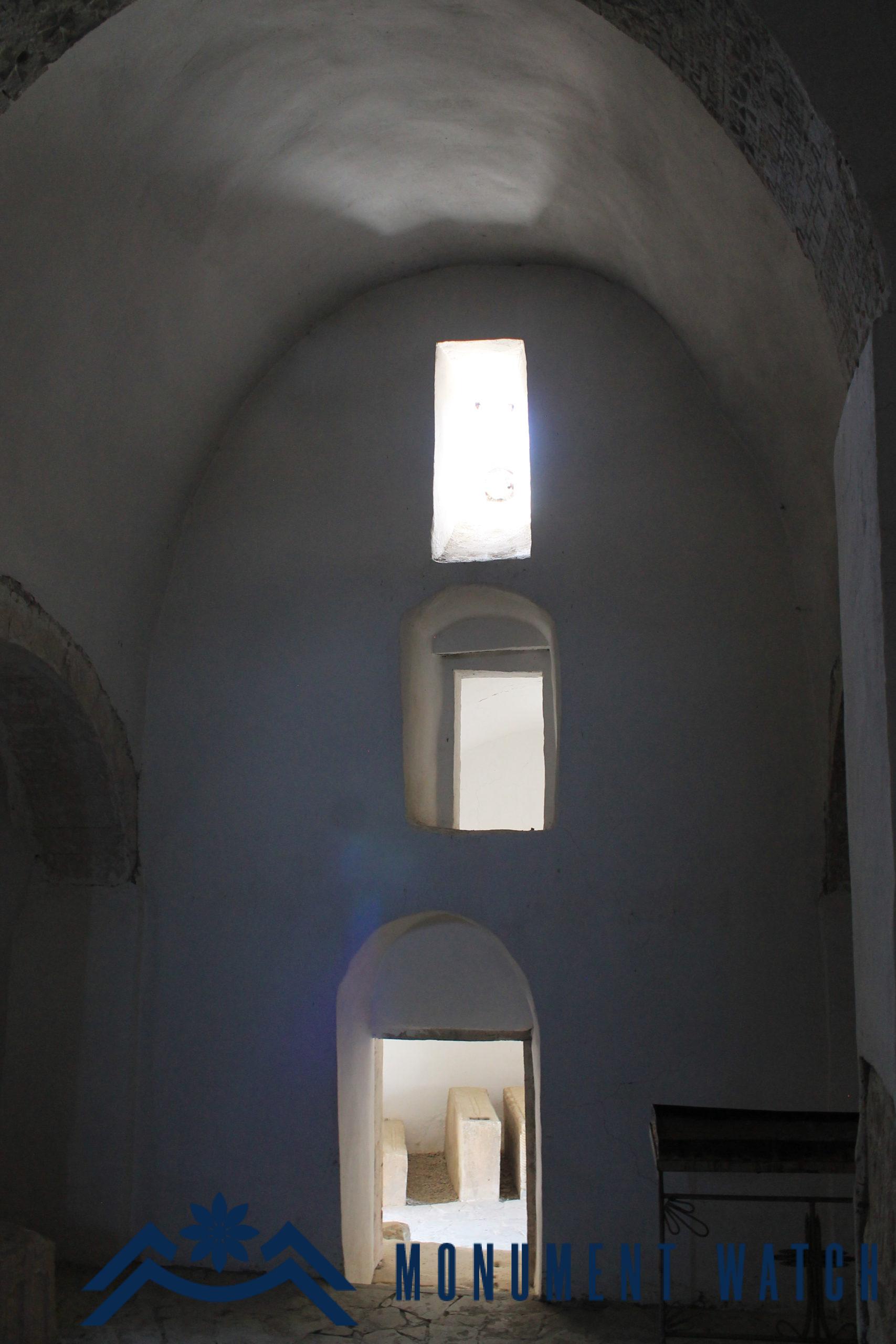
Նկ․ 4 Եկեղեցու արևմտյան պատի ներքնատեսքը։
The State of the Church Before, During and After the War
During the Soviet period, a monument was erected in the Kusanats hermitage of Avetaranots to commemorate the people of Chanakh who died in the Great Patriotic War (1940-1945) (fig. 8). After the first Artsakh war, restoration and repair works were carried out in the Kusanats hermitage area. The roofs have been tiled, the area has been improved; in 2013 a monument dedicated to the memory of the Avetaranots heroes, who died in the first Artsakh liberation war, was erected (fig. 9). On October 27, 2020, the village of Avetaranots came under the control of Azerbaijan. On October 7, 2021, a video was spread on the @ararathau telegram channel, where it is clear that the Azerbaijani armed forces have turned the monastery into a place of disorders, they show hostile, disrespectful attitude towards the Armenian heritage, shout, and insult the ritual function of the Armenian Apostolic Church. Acts of hostility and vandalism are done against the tombstones and church furniture. The video also shows that the tombstones have been broken, the whole area has been polluted, the board placed by the state, presenting the monument, has been broken and trampled (fig. 10). (https://monumentwatch.org ):
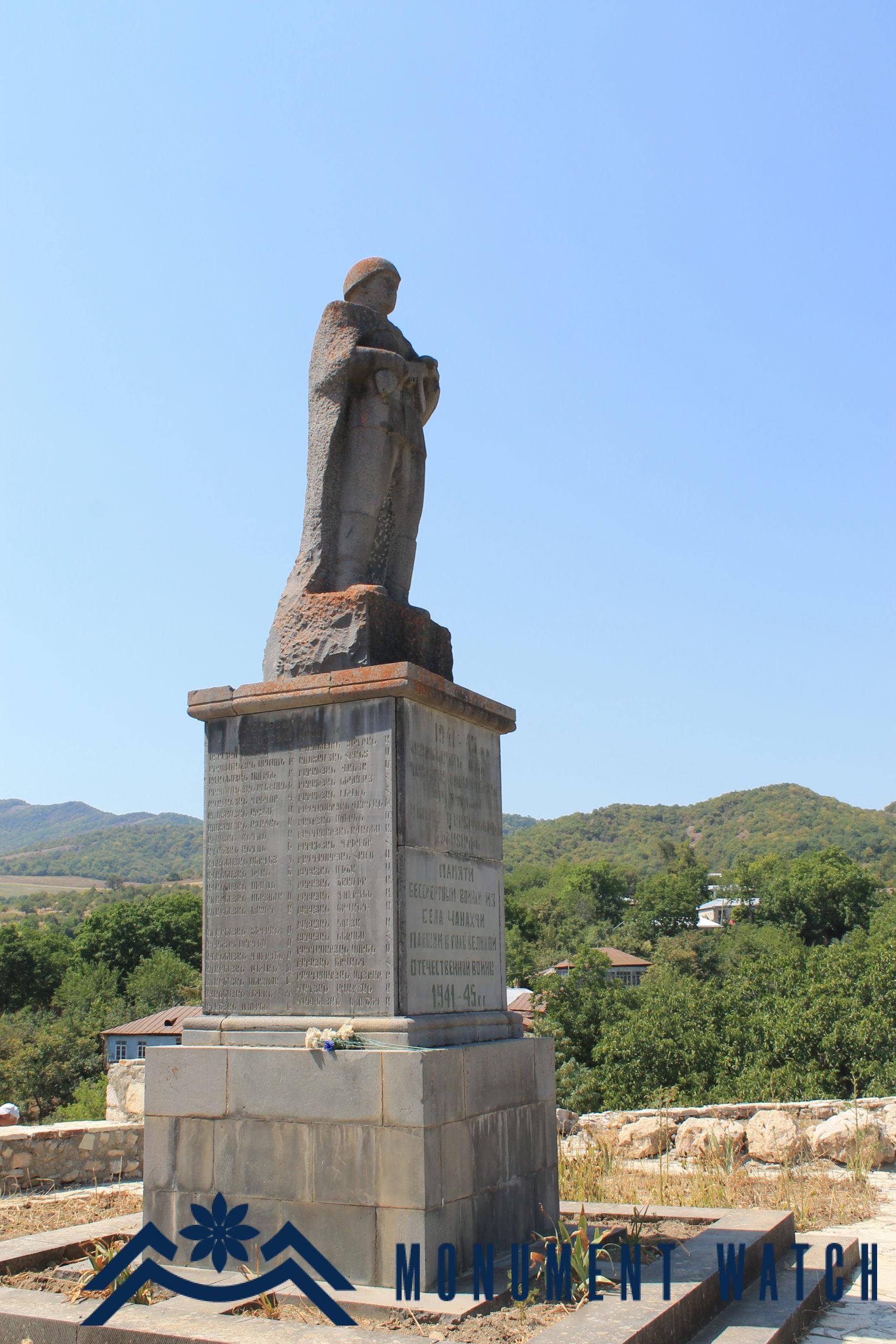
Նկ․ 8 Հայրենական Մեծ պատերազմում զոհված չանախչեցիների հիշատակը հավերժացնող հուշարձանը, լուս․ Լ․ Կիրակոսյանի:
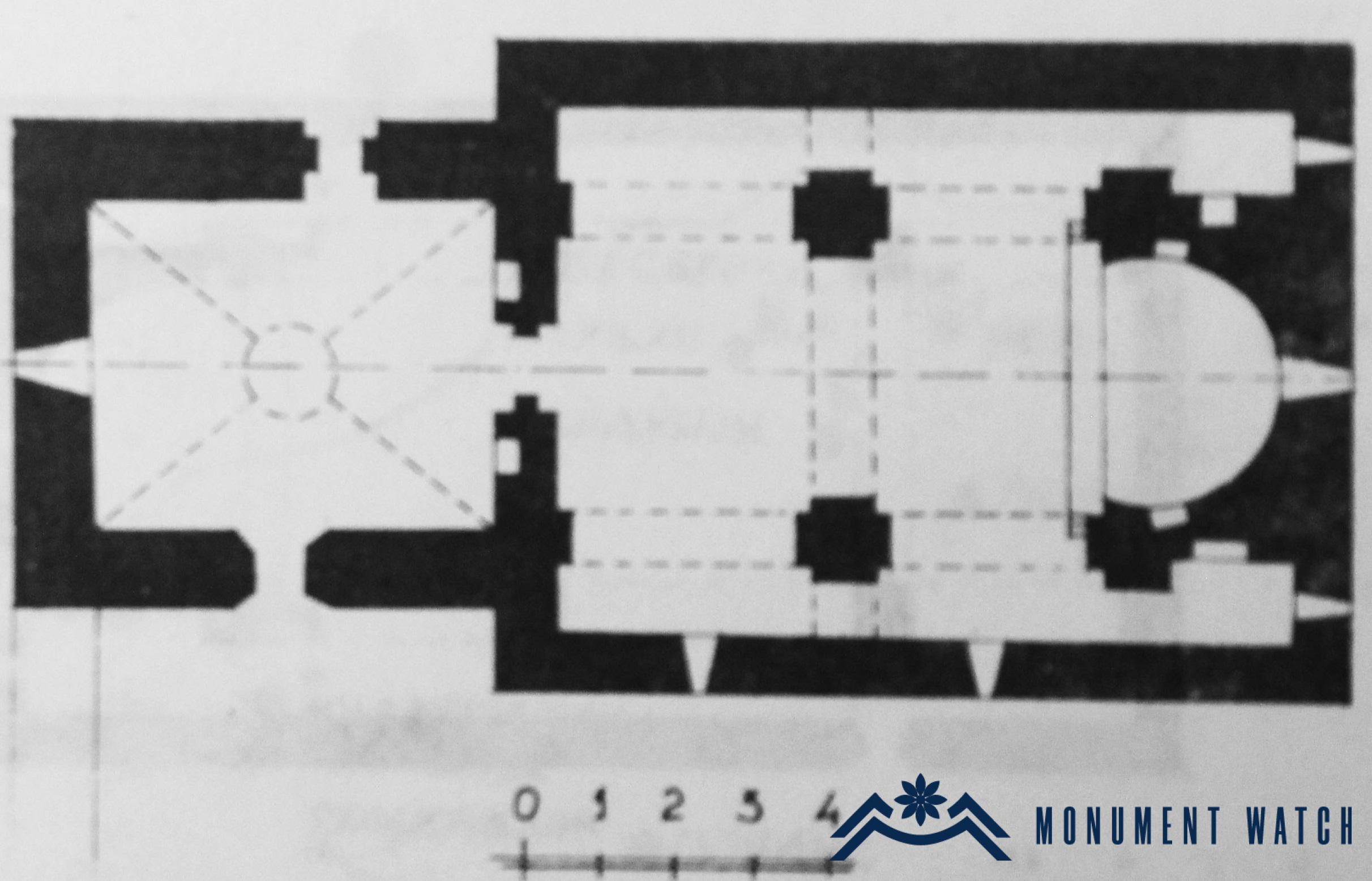
Նկ․ 3 Հուշարձանախմբի հատակագիծը, Мкртчян Ш., Историко-архитектурные памятники Нагорного Карабаха (второе издание), «Парберакан», 1989, Ереван, էջ 138:
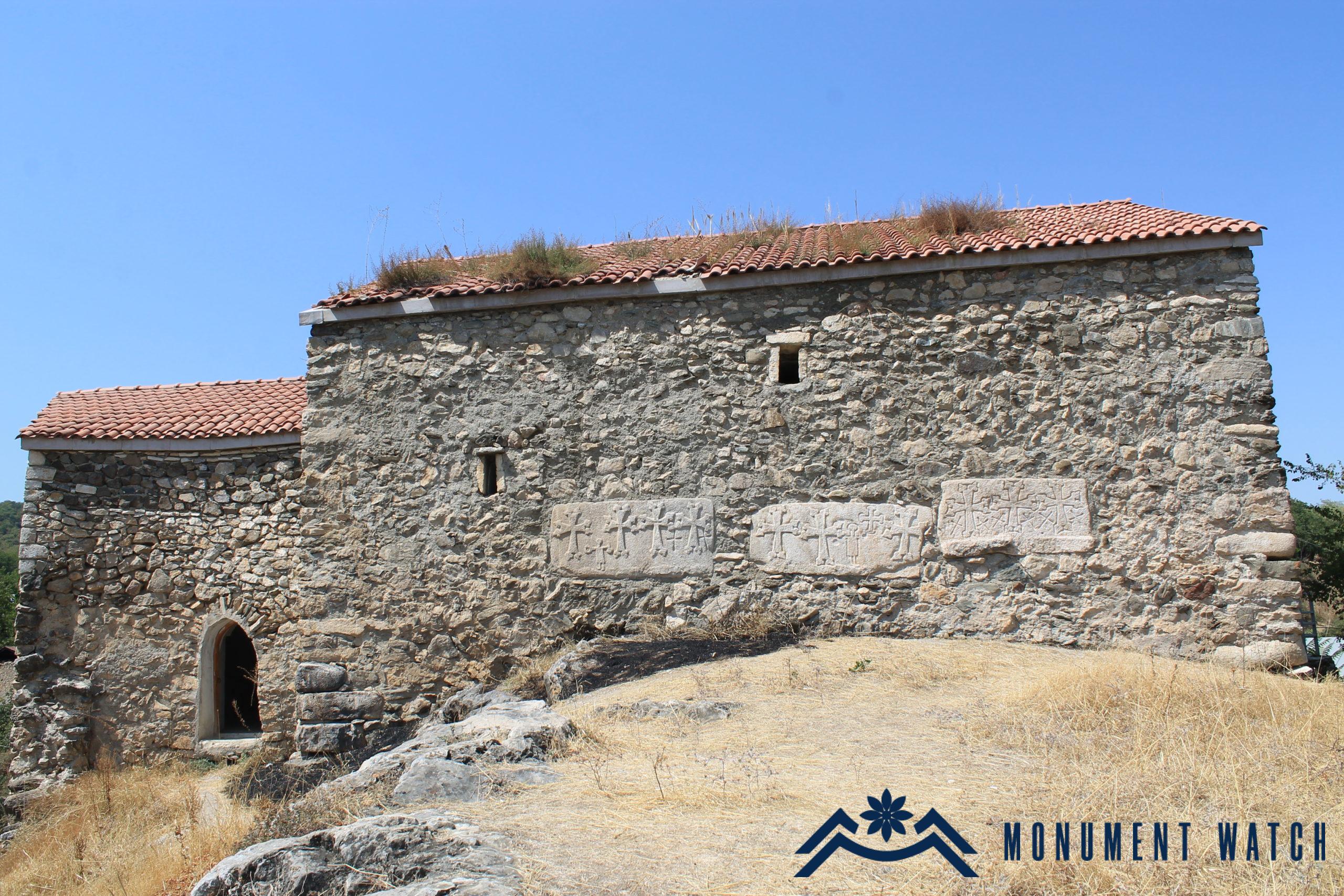
Նկ. 5 Եկեղեցու հարավային պատի մեջ ագուցված խաչքարերը, լուս․ Լ․ Կիրակոսյանի:
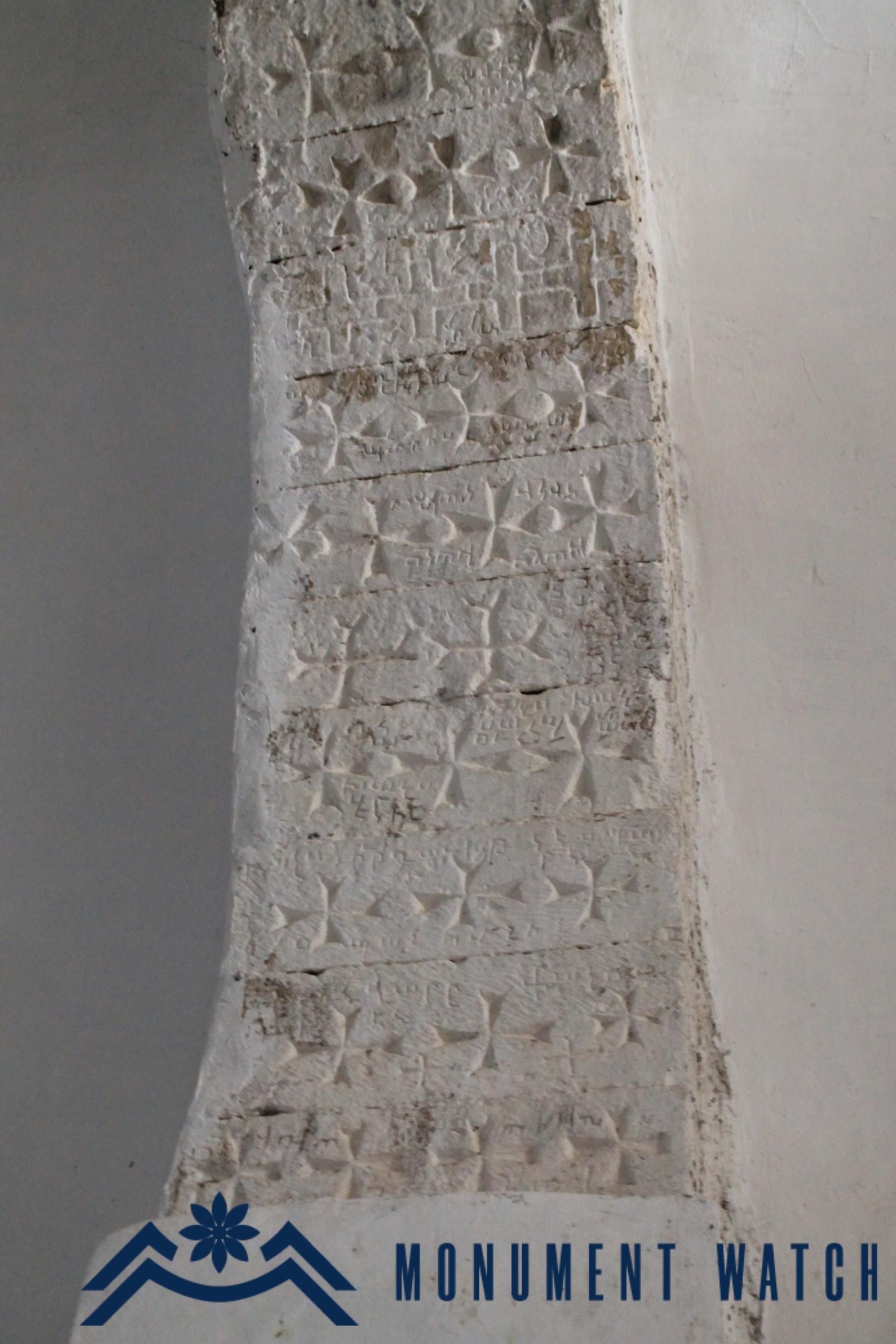
Նկ. 6 Եկեղեցու թաղի կոշտացնող կամարը, լուս․ Լ․ Կիրակոսյանի:
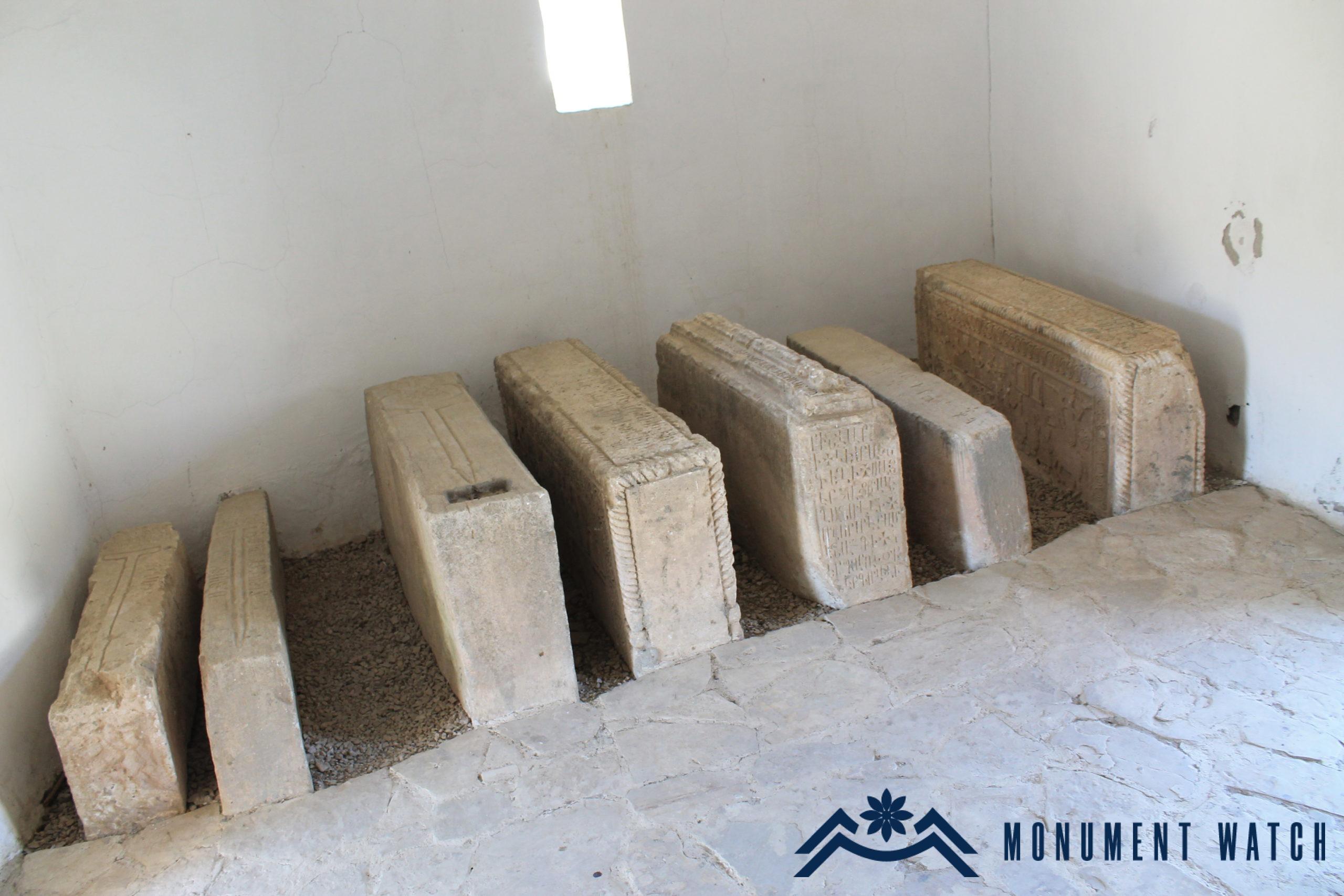
Նկ․ 7 Գավթում տեղադրված՝ Մելիք Շահնազարյանների տոհմի ներկայացուցիչների տապանաքարերը, լուս․ Լ․ Կիրակոսյանի:
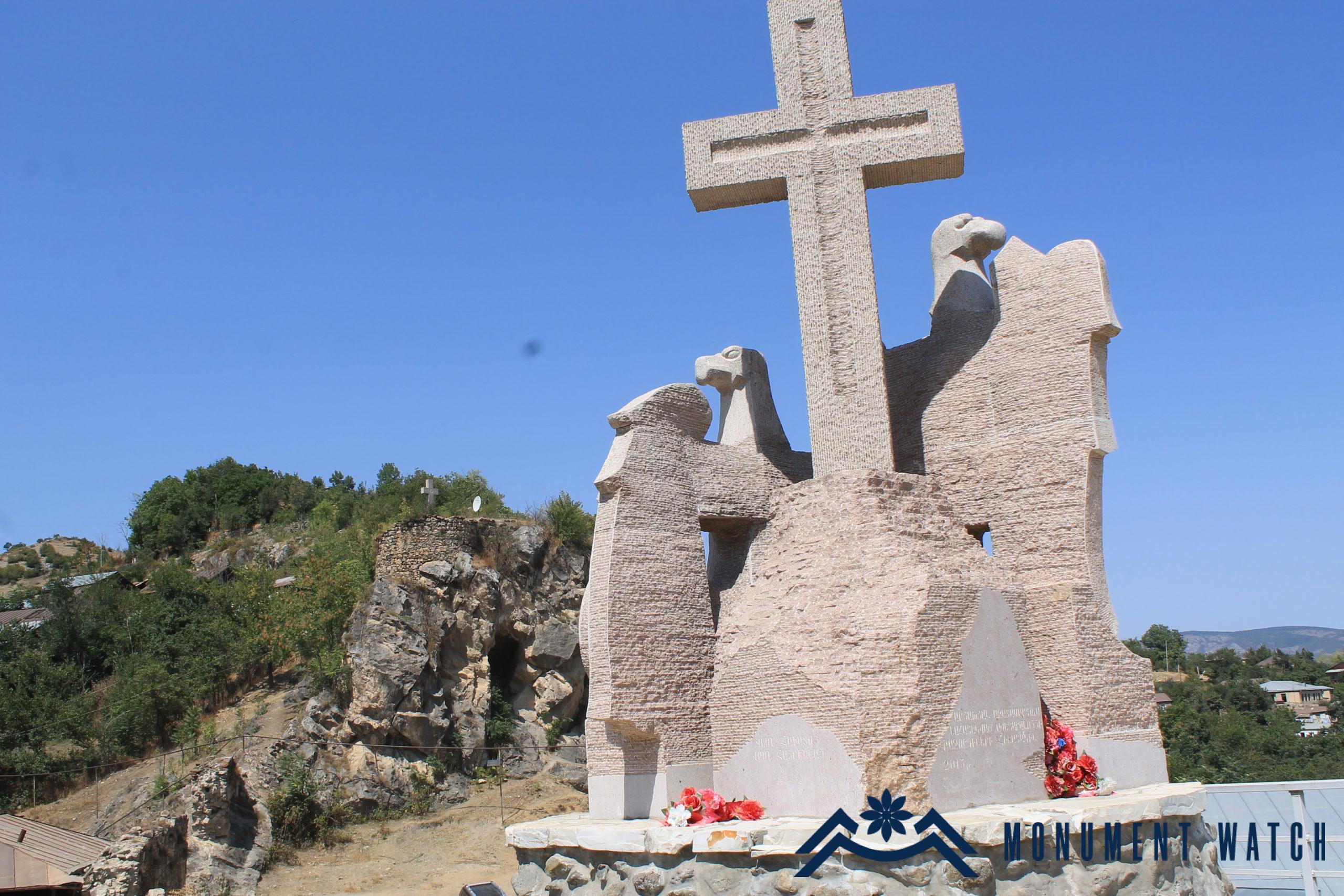
Նկ․ 9 Արցախյան առաջին ազատամարտում նահատակված Ավետարանոցի քաջորդիների հիշատակին նվիրված հուշարձան, լուս․՝ Լ․ Կիրակոսյանի:
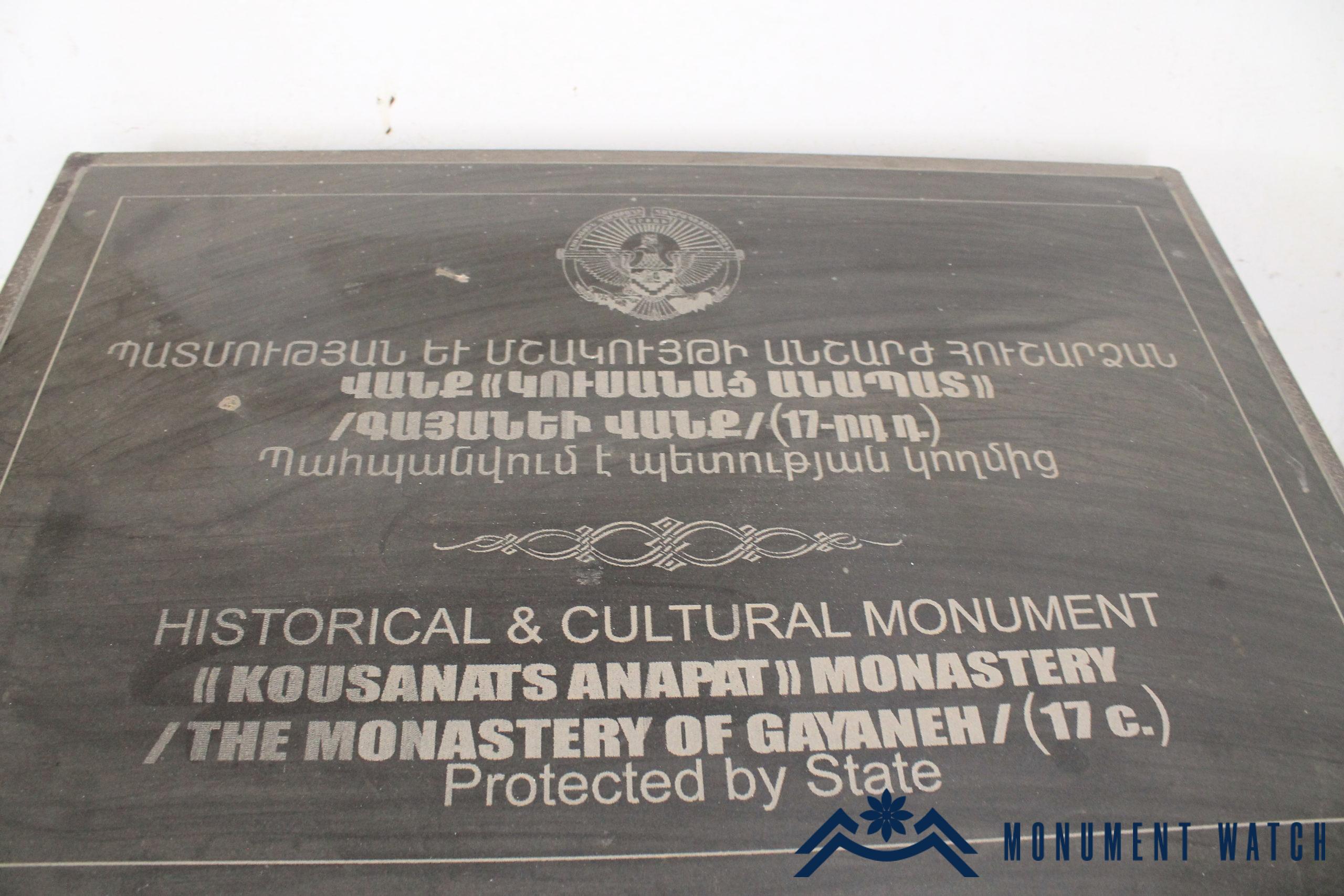
Նկ․10 Կուսանաց անապատը ներկայացնող ցուցանակը, լուս․՝ Լ․ Կիրակոսյանի:
The Hermitage Kusanats of Avetaranots
Artsakh